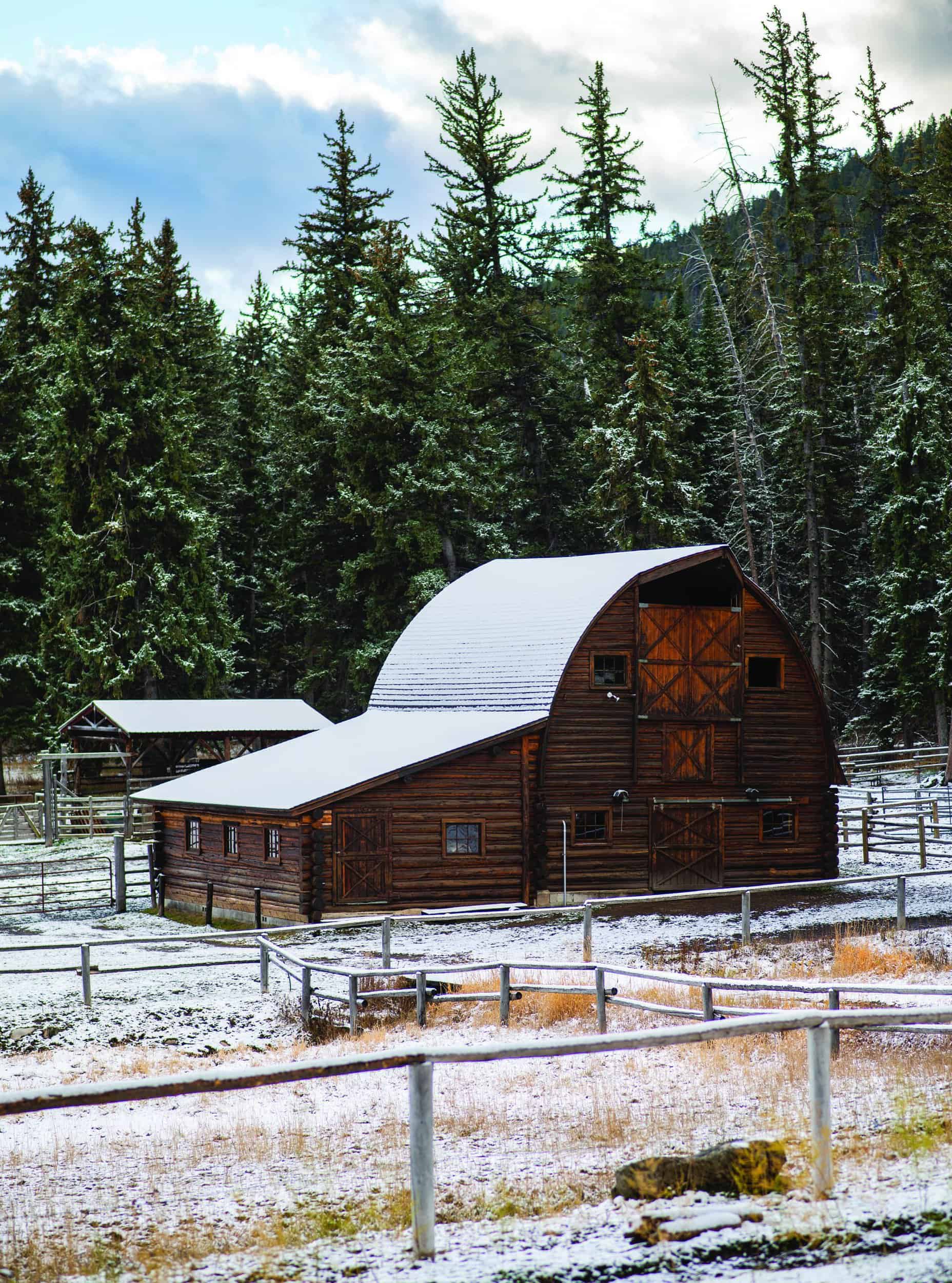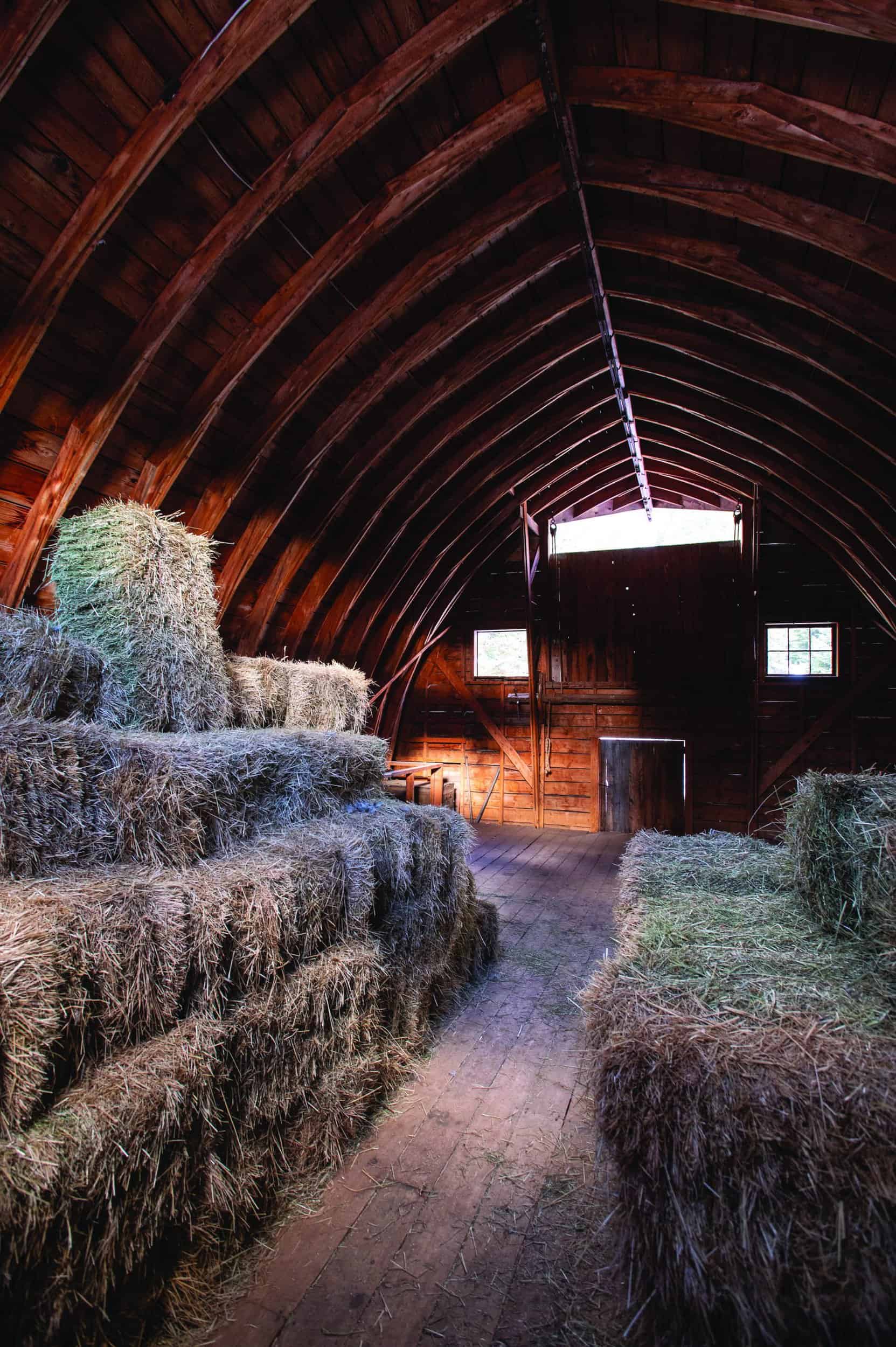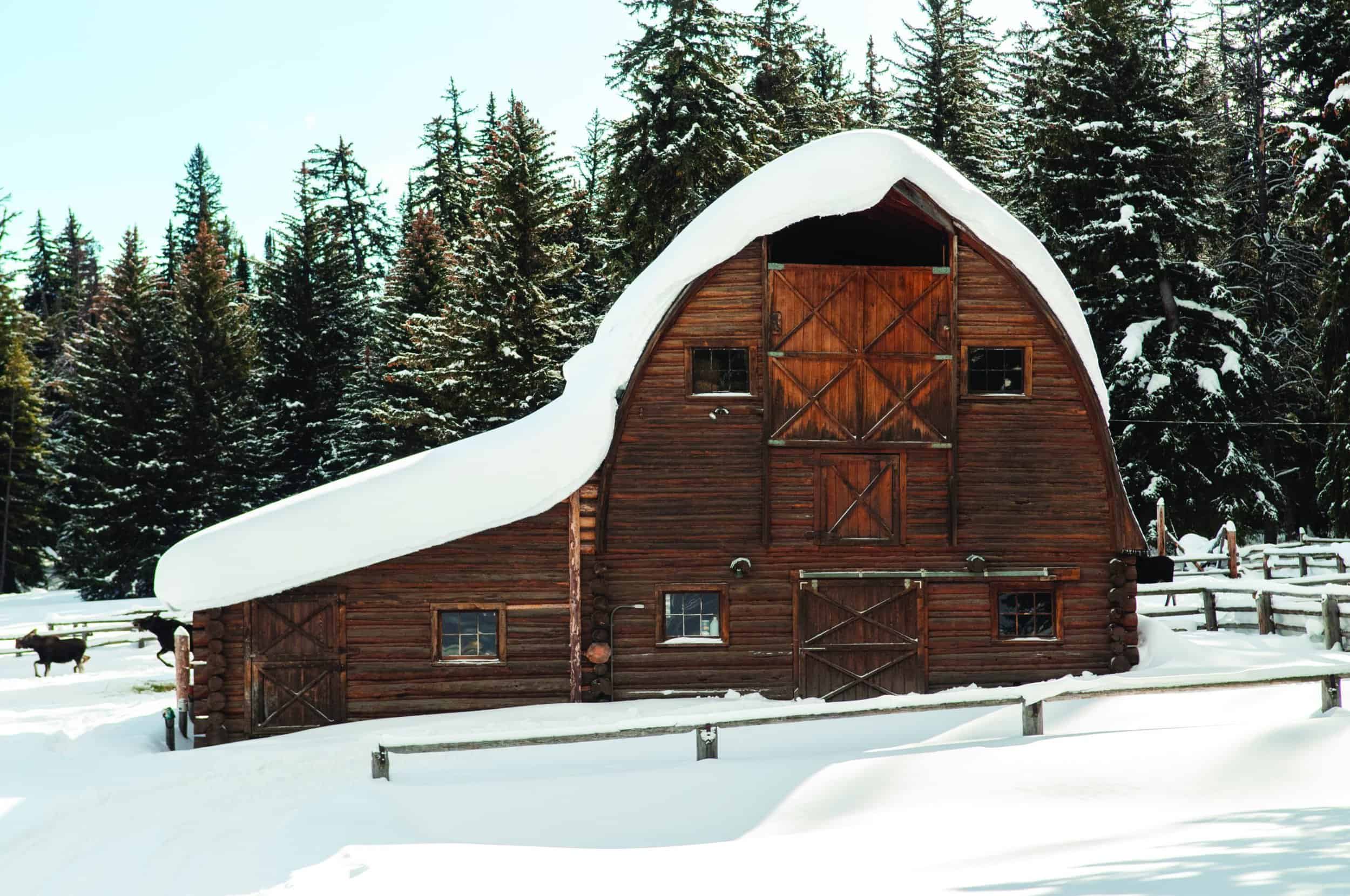Read The
Current Issue
Bircher Barns
Form meets function in these Gothic-style barns.
// By Maggie Theodora // Photography by BRADLY J. BONER

“They are just perfectly functional and elegant,” says John Carney, a principle architect at Prospect Studio, of the barns built by John Wesley Bircher in Wilson almost a century ago. The T.A. Moulton Barn on Mormon Row in Grand Teton National Park is undeniably the most famous and photographed barn in Jackson Hole, if not the U.S., but, considering the barns only (and not their backdrop), Bircher’s barns, done in a Gothic style with soaring, gabled roofs, are more aesthetic. And that’s just their exteriors. Inside, they’re even more impressive. Bircher designed and built them without using trusses, giving them a cavernous, cathedral-like feel. “They were built to hold as much hay as you could possibly hold,” Carney says. “Trusses interfere with storage.”
It is not known how many barns Bircher built with the help of his brother Andy and other local carpenters, but Carney says there are about seven of them still standing on Fish and Fall Creek Roads and around the base of Teton Pass in the community of Wilson. Most of these are on private property, although Jared Smith, a civil engineer who, as a young man, worked as a hay baler for Bircher’s widow, Maude Bircher, says that driving down Fish Creek Road, “if you know what you’re looking for, you can spot some.” The non-profit Teton Raptor Center has two Bircher-built barns on its campus off Wyoming Highway 22 just east of Wilson.
“It’s obvious that Bircher designed and built barns to last.”
—John Carney
The Raptor Center’s Bircher barns were commissioned in 1943 by Corliss Champion Moseley, a U.S. Army aviator turned rancher. Moseley wanted his barns, which were added to the National Register of Historic Places in 2015, to include decorative elements and have architectural flair, which Bircher delivered in spades, especially with the 36-foot-tall North Barn. (Fun fact: The year before Bircher built these barns for Moseley, he built the decidedly un-Gothic Stagecoach Bar—think short and squat—which is just across the street and still open today.) In 1956 Moseley sold his ranch and the barns to Gerrit and LeMar Hardeman; the Hardeman family raised Hereford cattle here until 1998 and, during this time, the barns became known as the Hardeman Barns. (They are still called this, even though the family hasn’t ranched here for more than two decades.) While the Teton Raptor Center is in the middle of a multiyear project that will expand its campus and restore its two Bircher barns, “it’s obvious that Bircher designed and built barns to last,” Carney says. “He had to be very clever to do this in the style that he did.” JH







